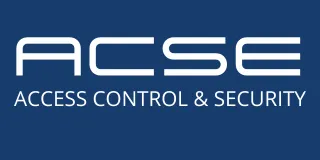
Step-by-Step Guide to Conducting a Gate Site Assessment
The installation of an automated gate system is not just about choosing the right materials or technology; it begins with a well-executed site assessment. This foundational step ensures that the gate system is tailored to the property, complies with safety standards, and meets the client’s unique needs. From small residential properties to sprawling industrial complexes, a detailed site evaluation is critical for success.
In this guide, we will outline every step of a professional gate site assessment, offering tips, tools, and best practices for installers, system integrators, and property developers.
1. Preparing for the Assessment
Preparation is key to an efficient and accurate site evaluation. This stage allows you to understand the client’s goals and gather the necessary tools and resources.
1.1 Understand Client Objectives
Determine the primary purpose of the gate: Is it for security, aesthetic enhancement, or access control?
Discuss specific needs such as automatic access systems, integration with smart home devices, or heavy-duty solutions for high traffic areas.
Assess the budget to balance between design options and functionality.
1.2 Review Available Documentation
Request site plans that include utility lines, property boundaries, and any zoning restrictions.
Check for relevant permits or previous installations that may affect the new system.
1.3 Assemble Tools and Resources
Equip yourself with measuring tools, soil testing kits, cameras, and note-taking devices.
Consider digital tools such as mapping software or drone imaging for large properties.
2. Conducting the Physical Inspection
The physical inspection is the backbone of any site assessment. This step involves analyzing the environment, measuring critical dimensions, and identifying potential challenges.
2.1 Evaluate Site Access
Confirm there’s enough space for vehicles and pedestrians to safely use the gate.
Consider access for installation equipment and future maintenance.
2.2 Examine Terrain and Topography
Identify slope gradients or uneven terrain that may require grading or special installation techniques.
Assess soil conditions to ensure the foundation can support the weight of the gate and its operator.
2.3 Review Environmental Factors
Take note of weather conditions that could affect gate operation, such as wind loads, heavy rain, or snow.
Consider sunlight exposure, which can degrade some materials or electronics over time.
3. Ensuring Safety and Compliance
A critical aspect of the assessment is ensuring that the design complies with safety regulations and standards, particularly UL 325 and ASTM F2200.
3.1 Safety Standards
Verify that the design includes safety features such as photoelectric sensors, edge sensors, and proper clearances.
Plan for emergency access, including manual release mechanisms in case of power outages.
3.2 Risk Identification
Look for areas where people or objects could become trapped between the gate and adjacent structures.
Identify risks associated with high traffic volumes, such as collisions or delays.
4. Technical Design Considerations
Once the safety and environmental aspects have been assessed, it’s time to focus on the technical elements of the gate system.
4.1 Gate Type Selection
Choose a gate type based on the site layout:
Swing Gates: Suitable for flat, open spaces.
Sliding Gates: Ideal for properties with limited space.
Cantilever Gates: Best for uneven or debris-prone terrain.
4.2 Automation and Power Requirements
Evaluate the availability of power sources and consider alternative energy solutions such as solar panels.
Plan for the integration of access control systems such as intercoms, keypads, or RFID readers.
4.3 Material Selection
For durability, select materials like galvanized steel or aluminum, especially in areas with harsh weather conditions.
Use finishes like powder coating to resist corrosion in humid or coastal regions.
5. Planning for Maintenance and Longevity
A well-planned gate system should be easy to maintain and built to last.
5.1 Maintenance Accessibility
Ensure all components, including motors and sensors, are installed in easily accessible locations.
5.2 Long-Term Durability
Choose materials and designs that require minimal maintenance while retaining functionality over time.
5.3 Planning for Upgrades
Design the system with flexibility for future upgrades, such as adding new access control features or integrating with smart technologies.
6. Documentation and Reporting
An essential part of the site assessment is documenting findings for future reference and clear communication with stakeholders.
6.1 Detailed Reporting
Include measurements, photos, and observations in a comprehensive report.
Highlight any challenges and propose solutions tailored to the client’s needs.
6.2 Recommendations
Provide the client with a clear set of recommendations on gate design, safety features, and materials.
7. Client Communication and Finalization
The final stage of the assessment involves presenting your findings to the client and ensuring alignment on the project plan.
7.1 Presentation of Findings
Use visuals like 3D renderings or diagrams to illustrate your proposed solutions.
Walk the client through potential challenges and how you plan to address them.
7.2 Approval and Adjustments
Obtain the client’s approval and make any necessary adjustments before moving forward.
Conclusion
A thorough gate site assessment is a vital step toward a successful installation. By following this step-by-step guide, you can ensure that your gate systems are safe, efficient, and tailored to the client’s needs. Whether you’re an installer, integrator, or property developer, a detailed evaluation sets the stage for long-term reliability and client satisfaction.

